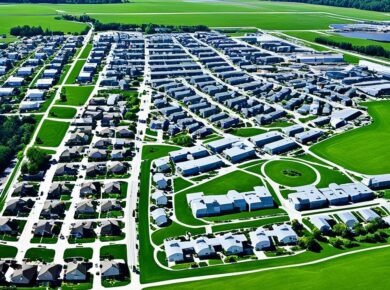Every property manager dreams of that golden number: 98% occupancy. It’s not just a statistic; it’s a lifeline in the world of real estate, a sign of health and vitality in a portfolio. Yet, achieving this seemingly elusive target often leads many to consider the wrong solutions—like slashing rents or cutting corners on property management. What I’ve discovered over years of navigating this competitive landscape is that true occupancy success lies not in discounts but in a deep understanding of tenant needs and an unwavering commitment to service excellence.
Understanding Tenant Needs
To maintain high occupancy rates, understanding the motivations and preferences of prospective tenants is crucial. Each demographic has unique expectations, whether they’re young professionals seeking modern amenities or families looking for safe, community-oriented neighborhoods. Engaging with potential tenants through surveys and feedback sessions can unveil their priorities—be it proximity to public transport, pet-friendly policies, or high-speed internet access.
Consider a recent property I managed in a vibrant urban area. We hosted a focus group with prospective tenants, and the insights gained were invaluable. They expressed a desire for flexible lease terms and community events. Implementing these suggestions not only attracted more applicants but also fostered a sense of belonging among current residents, which is key to retaining tenants long-term.
Creating a Welcoming Environment
Once you understand tenant preferences, the next step is to create an inviting atmosphere. This goes beyond the physical aspects of the property; it encompasses the overall experience tenants have throughout their stay. From the moment a prospective tenant enters the lobby, they should feel a sense of warmth and welcome. Simple touches—like fresh flowers in common areas or friendly staff greeting them—can set the tone.
When I took over management of an apartment complex that had been struggling with occupancy, the first thing I did was revamp the common areas. We painted the walls in inviting colors, added cozy seating arrangements, and ensured that the landscaping was well-maintained. The transformation was remarkable; not only did we see an uptick in applications, but current residents began to take pride in their home, leading to a further decline in turnover rates.
Effective Marketing Strategies
While creating a welcoming environment is essential, it’s equally important to market your properties effectively. In today’s digital age, your marketing strategy should encompass multiple platforms—from social media to local community boards. High-quality visuals are crucial; professional photographs showcasing the property can make a significant difference in attracting potential tenants.
In my experience, leveraging virtual tours has been particularly effective. During the pandemic, we pivoted to offering digital walkthroughs, which allowed prospective tenants to explore properties from the comfort of their own homes. This not only increased our reach but also saved time for both interested parties and our leasing team.
Building a Strong Online Presence
Your online presence is often the first impression potential tenants will have of your property. Ensuring that your website is user-friendly, informative, and up-to-date is paramount. Implementing search engine optimization (SEO) strategies can also enhance your visibility. Using keywords like “affordable apartments in [location]” or “luxury rentals” can help you appear higher in search results, attracting more traffic to your listings.
Additionally, engaging with tenants through social media can build a sense of community. Regular updates on property events, maintenance tips, or even tenant spotlights can foster relationships and improve tenant satisfaction, which translates to lower turnover.
Responsive Management and Maintenance
One of the most crucial factors that can make or break your occupancy rate is the responsiveness of your property management. Tenants need to feel heard and valued; when issues arise—be it maintenance requests or concerns about safety—swift action is essential. Establishing a reliable system for addressing tenant concerns can enhance their overall experience.
For example, implementing a tenant portal allows residents to submit maintenance requests easily and track their status. This transparency can significantly increase tenant satisfaction. In a property I managed, we noticed a direct correlation between quick response times and positive tenant reviews, which ultimately fed into our occupancy rates.
Fostering Community Engagement
Tenant retention is closely tied to the sense of community within a property. Organizing regular events, like summer barbecues or holiday gatherings, encourages tenants to connect with each other and fosters a sense of belonging. This not only enhances the living experience but also reduces turnover rates significantly.
Involving tenants in decision-making—like choosing themes for events or suggesting improvements—can further strengthen this sense of community. When tenants feel they have a stake in their living environment, they’re more likely to renew their leases and recommend the property to others.
Utilizing Technology to Enhance Experience
Embracing technology can streamline operations and improve tenant satisfaction. Automated systems for rent collection, communication, and maintenance requests can reduce the workload on property managers while providing a seamless experience for tenants.
For instance, integrating smart home technology can appeal to tech-savvy renters. Offering features like keyless entry, smart thermostats, and energy-efficient appliances can differentiate your property from others in the market.
Data-Driven Decisions
Using data analytics to track occupancy trends, tenant demographics, and turnover rates can provide actionable insights. By examining these trends, property managers can make informed decisions on marketing strategies and property improvements.
Regularly analyzing data also allows you to identify potential issues before they become significant problems. If you notice a spike in turnover rates in a particular property, it’s an opportunity to investigate and address what might be causing dissatisfaction among tenants.
Conclusion: The Path to Sustainable Occupancy
Achieving and maintaining a 98% occupancy rate is more than just a number; it’s a reflection of the commitment to creating a thriving community where tenants feel valued and cared for. By focusing on tenant needs, creating welcoming environments, employing effective marketing strategies, ensuring responsive management, fostering community engagement, and leveraging technology, property managers can achieve sustainable occupancy.
It’s crucial to remember that occupancy is not merely about filling units; it’s about cultivating a place where people want to live. By prioritizing tenant satisfaction and community, we can create not just properties but homes, leading to long-term success in the ever-evolving real estate landscape.




